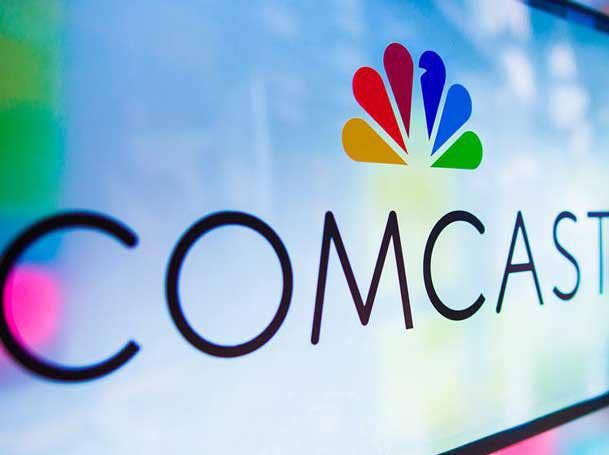Comcast Cable, Internet Revenues Buoy Firm Through COVID-19 Turbulence
The cable giant‘s business segment, with its high-speed internet services that are ‘core’ to the company, didn’t feel the ill effects of the global COVID-19 pandemic in Q2 2020.

Comcast Corp.‘s strength in business services, sought-after high-speed internet, and wireless carried the cable giant’s balance sheet during an otherwise tumultuous fiscal period brought on by the disruptive COVID-19 pandemic.
The cable giant‘s “best-in-class and flexible” broadband network -- the core of the company -- saw record-low customer churn during the second-quarter of the year, said Comcast Chairman and CEO Brian Roberts during Comcast’s Q2 2020 earnings call on Thursday. ”This confirms that our investments are working. We offer differentiated products and services, and a fantastic customer experience,” he said.
Comcast‘s NBCUniversal entertainment and theme parks segment, on the other hand, succumbed to park closures, postponed filming schedules, and cancelled sporting events during the quarter with a 25 percent decline in revenues. Roberts said that the company is “playing defense” and to expect more noise in quarterly numbers -- an issue that won’t be unique to Comcast, he added.
[Related: Comcast Business Booms During COVID-19 Pandemic As Customers Demand More Broadband]
Comcast‘s Cable Communications unit -- which includes high-speed internet, voice, video, wireless and business services -- stayed relatively flat, despite pressures due to the pandemic. The segment generated revenue of $14.43 billion compared to $14.45 billion in the second quarter of 2019.
Cable Communications increased its total number of customer relationships by 217,000 in the quarter, a 43-percent increase year-over-year -- marking the best second quarter result on record for the segment. That growth was driven by Comcast‘s high-margin connectivity business, said Michael Cavanagh, Comcast’s senior executive vice president and CFO, during the call.
High-speed internet continued to be a bright spot on the balance sheet for the cable giant, with revenues climbing 7.2 percent to $5 billion, up from $4.66 billion a year ago. For the second-quarter 2020, Comcast added a total of 323,000 net-new high-speed business and residential internet customers, which also was the second best quarterly result for net adds in 13 years for the high-speed internet segment, Cavanagh said.
Comcast‘s Business segment also continued to shine, pulling in $2.04 billion during Q2, up 3.6 percent from $1.93 billion during 2019’s second-quarter.
Comcast‘s Business unit has historically been very successful in the small-to-midsized business space with its connectivity services. While many SMBs have been hard hit by the coronavirus pandemic, especially those in the hospitality space, Comcast is seeing “encouraging trends” in the SMB space as shelter-in-place orders start to lift in some states, Roberts said.
Roberts credited Bill Stemper, Comcast‘s president of Comcast Business, and his team for building a “robust small business customer base” and said that Comcast is well-positioned to pick up more customers in this segment as more businesses bounce back from the pandemic.
“The level of losses is moderated and connects are rebounding,” he said. ”I think we are well-positioned with local operations at the regional level that are ready to help customers out … We‘re still the challenger.”
For the last several years, Philadelphia-based Comcast has been working to expand its relationships with business customers through value-added services, such as Comcast Business WiFi Pro and SecurityEdge. Comcast in 2018 launched its ActiveCore SDN platform, with SD-WAN as its inaugural offering. The provider has since added a managed router offering and plans to follow up with more on top of the platform, including a managed security and managed Wi-Fi offering.
Comcast‘s wireless service that it debuted three years ago, Xfinity Mobile, grew a 33.9 percent during Q2 with revenues of $326 million compared to last year‘s first-quarter result of $244 million.
Comcast in Q1 opened its Xfinity Wi-Fi hotspots in business and outdoor locations across the country for free, regardless of whether or not users are Comcast subscribers, and the company said on Thursday it would keep these hotspots up and running until the end of the year.
The company‘s NBCUniversal segment, which includes theme parks, took the biggest hit due to COVID-19. Overall revenue declining year-over-year by 25 percent. Theme park revenue, which is generated from Universal Studios parks in the U.S. and in Asia, fell by 94.1 percent in Q2 2020 due to the carrier closing all of its parks globally because of the pandemic. Roberts referred to the struggling business segment’s performance as “momentary.”
During the quarter, Comcast also debuted Peacock, its Netflix rival, with 10 million sign-ups to date, the company said.
For the quarter ending June 30, Comcast reported revenues of $23.72 billion, a double-digit decline of 11.7 percent compared to Q2 2019‘s result of $26.86 billion. Net income in the quarter was $2.98 billion, dropping 4.4 percent from last year’s second quarter’s ending balance of $3.13 billion. The cable giant posted adjusted earnings per share of 69 cents, down 11.5 percent, compared with 78 cents per share for the second quarter of 2019.